Homeowners
Note: EPA no longer updates this information, but it may be useful as a reference or resource.
Why GreenScape? | Steps to GreenScape | Calendar | Composting Instructions | Rebuy | Resources

GreenScaping: The Easy Way to a Greener, Healthier Yard
Why GreenScape?
Highlights
- View and print this brochure (PDF) (16 pp, 2.1MB, about PDF) | en Español (PDF) (16 pp, 2.7MB, about PDF)
- Backyard Composting: It’s Only Natural (PDF) (2 pp, 627K, about PDF)
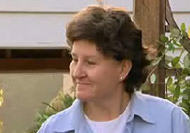
Podcast available
Our yards are our outdoor homes: fun, beautiful, great spaces for relaxing. By taking care of our lawns and gardens properly, we can save money, time, and help the environment. GreenScaping encompasses a set of landscaping practices that can improve the health and appearance of your lawn and garden while protecting and preserving natural resources.
By simply changing your landscape to a GreenScape, over time you can save time and money and protect the environment.
- Save Money by eliminating unnecessary water and chemical use
- Save Time by landscaping with plants that require less care
- Protect the Environment by:
- Conserving water supplies
- Using chemicals properly and only when necessary to keep waterways and drinking water clean
- Reducing yard waste by recycling yard trimmings into free fertilizer and mulch
Put nature to work in your yard
In nature, soil recycles dead plants into nutrients for new plant growth. Plants are adapted to the water, sun and soil available in their site. Maintaining a wide variety of healthy plants, soil organisms, beneficial insects and animals can keep most pests and diseases in check.
By working with nature, you can have a great-looking yard that’s easier to care for, cheaper to maintain and healthier for families, pets, wildlife and the environment.
How? Start with these five steps:
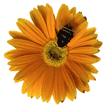
- Build and maintain healthy soil
- Plant right for your site
- Practice smart watering
- Adopt a holistic approach to pest management
- Practice natural lawn care
 Build and Maintain Healthy Soil With Compost and Mulch
Build and Maintain Healthy Soil With Compost and Mulch
A teaspoonful of healthy soil contains about 4 billion organisms! This community of beneficial soil creatures keeps our landscapes healthy by:
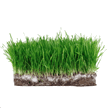
- Creating a loose soil structure that allows air, water and plant root growth into the soil.
- Recycling nutrients and making them available to plants.
- Storing water until plants need it.
- Protecting plants from some pests and diseases.
Know what your soil needs.
A soil test will tell you how much nitrogen, phosphorus, potassium and lime your soil needs to grow healthy plants. Depending on the condition of the soil, you may not even need to apply these nutrients! Contact your local Cooperative Extension office or garden supply center for a soil test kit.
Feed your soil with compost.
Dig or rototill one to three inches of compost into 6 to 12 inches of top soil when you’re making new beds or planting lawns. Top dress existing lawns with a quarter- to half-inch of compost every spring or fall. Compost helps sandy soils hold nutrients and water, loosens clay soils and feeds the beneficial soil life so it can feed and protect your plants.
Make compost at home, or buy it in bags or bulk.
Yard and food waste are a gardener’s gold! Leaves, chopped stalks, flowers and grass all make great compost in a pile or bin. Vegetable scraps and coffee grounds can also be added to your bin, but do not use meat, dairy or oils because they can attract pests. You should turn your compost every few weeks with a pitchfork to distribute air and moisture. Make sure to sprinkle water on your pile in dry weather. In most climates, you will have finished compost in 3 to 6 months, when the waste becomes a dark, crumbly material that is uniform in texture. You can then spread your compost in garden beds, under shrubs, on your lawn, or use it as potting soil. Learn how to create your own compost pile with these backyard composting instructions.
Mulch it!
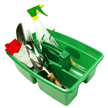
Mulch is a layer of organic material like leaves, aged wood chips, compost or grass clippings that you spread in spring or fall around your plants. Never exceed more than three inches of mulch in your landscaping beds, and keep mulch about an inch away from stems and tree trunks. Mulch stabilizes soil temperature, prevents weeds, feeds the soil for healthier plants and helps to conserve water. And it recycles itself!
Mulch improves:
- Flower beds and vegetable gardens. Use one to three inches of shredded leaves, compost or grass clippings that have not been treated with pesticides.
- Trees, shrubs and woody perennials. Use two to three inches of woody mulches, like shredded tree bark or aged wood chips. Shredded fall leaves also work well. Be sure to keep mulches an inch away from plant stems or trunks to prevent rot.
- Lawns. Mulch your lawn? Yes, you can “grasscycle” (leave the clippings on the lawn when mowing). The clippings quickly decompose and release valuable nutrients back into the soil to feed the grass, reducing the need for nitrogen by 25 to 50 percent.
Need fertilizer? Go slow!

Most trees and shrubs get all the nutrients they need from the soil. But annual plants, vegetable gardens and lawns sometimes need additional nutrients from a fertilizer. When shopping for fertilizer, look for a product that contains “natural organic” or “slow-release” ingredients. Unlike “quick-release” fertilizers, natural organic or “slow-release” fertilizers feed your plants slowly and evenly. The result? Healthier plants with strong root systems and no excessive “top growth”—saving you time and money. Moreover, using “slow-release” fertilizers can reduce nutrient run-off into ground and surface waters.
Improper use of fertilizers can damage beneficial soil life essential for healthy soils and plants. Excess chemicals can also find their way into ground water, streams and lakes where they can contaminate drinking water and harm fish and other wildlife. Read and follow product labels carefully before using fertilizer and other lawn chemicals and make sure you avoid application of these products to impervious surfaces to avoid run-off.
Remember, healthy plants grow in healthy soil.
 Plant Right For Your Site
Plant Right For Your Site
Get to know your yard and decide how you want to use it.

pH is a measure of soil acidity or alkalinity and directly affects the availability of nutrients for your plants.
Where is it sunny or shady? What is the pH of your soil? What type of soil (e.g. sandy, clay) do you have in your yard? Look around—are there plants with problems? Where do you want play areas, vegetables, color, views or privacy? How much lawn do you need or want to maintain?
Choose the right plant for the right place.
Select plants that grow well in your area of the country and fit the amount of sun, type of soil and water available in your yard. (In general, it makes sense to use low-water plants to save yourself the time and expense of watering). Think about how big a tree or shrub will be when mature (especially next to your house or driveway and near power lines).
Pick plants that resist pests
Many garden centers and nurseries offer information about pest- and disease-resistant plant varieties. After they’re established, they’ll save you time and money on pest control.
Give plants a good start.
Prepare the soil by mixing one to three inches of compost into soil in planting beds. For trees and shrubs, mix compost into the whole planting bed, or just plant in existing soil and mulch thoroughly. Set plants at the correct soil level, following instructions provided with your plant. Mulch new plantings and be sure to water even drought-tolerant plants during their first few years especially in the summer and fall until they build deep roots.
Make Space for Wildlife
You can invite birds, butterflies and other wildlife into your yard, protect streams and fish, and make a more attractive landscape.

- Consider planting native trees and plants, especially ones with berries, fruit and flowers.
- Plant in layers (ground cover, shrubs, and trees) so your landscape is like the forest.
- Don’t plant invasive species—check with your local Cooperative Extension Office for a list of invasive “;noxious weeds.”
- Minimize potential harm to birds, beneficial insects, and fish by using pesticides only when necessary and using them properly. Read the label and follow instructions carefully whenever you use a pesticide.
- Provide a bird bath or other small water source. Make sure you change the water every couple of days so your bird bath doesn’t become a mosquito breeding ground.
- Leave wild “buffer” areas of native plants along ravines, streams, shorelines and fencelines.
 Practice Smart Watering for Healthier Plants
Practice Smart Watering for Healthier Plants
Too much of a good thing.
Did you know that watering too much or too little is the cause of many common plant problems? You can have healthier plants, save money on water bills and conserve precious water resources by learning to give your lawn and garden just what they need, and no more.
Water deeply, but infrequently.
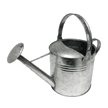
Most plants do best if the soil is allowed to partially dry out between waterings. A loss of shine or footprints remaining after you walk across the lawn indicates that it’s time to water. Vegetables and other annuals should be watered at the first sign of wilting, but tougher perennials (plants that live several years) need water only if they stay droopy after it cools off in the evening. Trees and shrubs usually don’t need any watering once their roots are fully established (two to five years), except in very dry years.
Make every drop count.
Some easy ways to lower water bills and get more water to plants include:
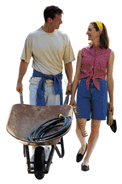
- Build your soil with compost and mulch to hold water and reduce evaporation.
- Choose low-water-use plants. Once established, they can often thrive just on rainfall.
- Use soaker hoses or drip irrigation on beds — they can save 50 percent or more compared with sprinklers.
- Use an outdoor water timer (available at garden stores) to water just the right amount, frequency and time of day.
- Water lawns separately from other plantings. Make sure sprinklers aren’t watering the pavement.
- When soil is dry or compacted, it won’t absorb water quickly. If water puddles, stop watering a while and then restart so the water has time to soak in.
- Water in the early morning—if you water at mid-day, much of the water just evaporates. Evening watering should be avoided because it can encourage the growth of mold or plant diseases.
- In a dry spell, you can allow an established lawn to go dormant. Water just once a month and brown areas of the lawn will bounce back in the fall.
Rain Gardens
Rain gardens are landscaped areas design to soak up rainwater from your roof, driveway, and/or lawn. These gardens are designed to collect rainwater runoff and filter and slowly release it into the ground. A rain garden typically can retain 30 percent more rainwater than a conventional patch of lawn. By reducing the volume and velocity of storm water runoff, rain gardens help reduce soil erosion, filter fine particulates, and capture fertilizer and excess nutrients that can pollute rivers and lakes.
The links listed below provide more information on rain gardens and guides for building your own rain garden.
- University of Wisconsin Cooperative Extension’s Water Resources Program

- Wisconsin Department of Natural Resources

- Rain Garden Network

- Rain Gardens of West Michigan

- Watch the Reduce Runoff: Slow It Down, Spread It Out, Soak It In video about using design techniques to mimic the natural ways that water flows.
Let the rain soak in.
Rain rushes off roofs, pavement and compacted soil. This causes flooding downstream, erodes stream banks and muddies the water, which harms fish and other wildlife. You can help slow this run-off and help the soil hold the moisture plants need in summer.
- Direct downspouts out into lawns, rain gardens or “rain barrels.”
- Use compost and mulch to reduce erosion and help rain soak in.
- Use open pavers, gravel or other pavement options that let rain seep into the soil.
- Plant dense strips of native trees, shrubs and groundcovers next to streams, lakes and ditches to stabilize the soil and to slow and filter run-off.
 Adopt a Holistic Approach to Pest Management
Adopt a Holistic Approach to Pest Management
Natural Pest Control
Only about 5-15 percent of the bugs in your yard are pests. “Good bugs,” like the ground beetle and the green lacewing, help control pests.
Pesticides (including weed and bug killers) can be effective tools for controlling pests such as insects, weeds and diseases. Be sure you need a pesticide before you use it. On-going pest problems are often a sign that your lawn or garden is not getting what it needs to stay healthy. You need to correct the underlying problemto reduce the chance of pests reappearing. Remember, a holistic—or integrated pest management—approach is the most effective way to manage pests. Here’s how:
Start with prevention.
- Maintain healthy soil with compost and mulch.
- Select pest-resistant plants and put them in the sun/shade and soil conditions they like.
- Use a variety of plants so, if pests attack, your whole garden isn’t at risk.
- Mow higher. Most grasses should be mowed to a height of two to three inches. Taller grass has more leaf surface and deeper roots and eventually chokes out many weeds.
- Clean out diseased plants so disease doesn’t spread.
- Pull weeds before they go to seed and spread.
- Remove dead plants to reduce hiding places for insect pests.
Identify the problem before you spray, squash or stomp.

Whether it’s a bug, disease or weed, you need to identify it to know how to effectively manage it. The cause of ailing plants or grass may not be pests or disease but incorrect mowing or pruning, improper watering or other easily corrected practices. That scary bug could actually be a beneficial “good bug” that eats problem pests.
Accept a little damage—give nature time to work.
Accept a few pests, as long as they are not harmful to the long-term effects of the landscape. Natural predators often bring pests under control, but they need time to work. Monitor your landscape to spot signs of pests but don’t spray at the first sign of damage—nature may control it for you or plants may outgrow the damage.
If a pest or weed problem develops, use an integrated approach to solve the problem.
Physical controls like traps, barriers, fabric row covers or plants that repel pests can work for some pests.
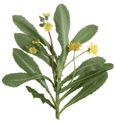
- Use a little “elbow grease.” Long-handled weed pullers pop dandelions and other weeds out easily.
- Mulching, not to exceed three inches, reduces weeds in garden beds.
- Use “crop rotation” techniques by changing the planting location for annuals to minimize their susceptibility to pests and disease.
Replace problem plants with pest-resistant ones for a healthier, care-free yard.
If a plant, even a tree, has insect, pest or disease problems every year, consider replacing it with a more tolerant or resistant variety or another type of plant that doesn’t have these problems.
Use pesticides responsibly.
Carefully read and follow pesticide product label instructions. Avoid overuse of pesticides. When you have a small problem area, treat just that area, not the entire yard.
 Practice Natural Lawn Care
Practice Natural Lawn Care
It’s easy to save time and money by putting these steps to work for a beautiful yard.
Mow higher, mow regularly and leave the clippings.
How Long to Run the Sprinkler?
- Scatter clean, empty tuna cans or other straight-sided containers on your lawn.
- Turn on the sprinklers and check the time.
- When most cans have one inch of water in them, turn off the sprinkler and check how long it ran.
- Now you know how long to run your sprinkler each week in summer if you want to keep your lawn green.
Mow more frequently when grass is actively growing so that you are only cutting no more than one-third of the height of the grass. This practice minimizes the amount of grass clippings. The desired height of grass varies depending on climate. Contact your local Cooperative Extension office for local recommendations. “Grasscycling,” or leaving the clippings on the lawn, doesn’t cause thatch build up—but it does make lawns healthier. Soil organisms recycle the clippings into free fertilizer, and you save all the work of bagging. Modern mulching lawn mowers make “grasscycling” even easier and homeowners can reduce their mowing time by 30 to 40 percent by not having to bag clippings.
Use “natural organic” or “slow-release” fertilizers.
Choose “natural organic” or “slow-release” fertilizers to reduce nutrient run-off and leaching. Keep fertilizers on the soil and out of the street! Fertilizers that run off are a waste of money and contribute to pollution of streams and lakes. Use fertilizers sparingly. The more you fertilize, the faster the grass grows and the more frequently you have to mow
Water deeply, but infrequently, to moisten the whole root zone.
Honey, I Shrunk the Lawn!
- Grass grows best on level, well-drained soil in full sun or part shade.
- Consider alternatives to grass on steep slopes, shady areas or near streams and lakes.
- In these areas, it takes a lot of extra work (and sometimes chemicals) to maintain grass.
- Look for other plants, such as ground covers, better suited to soggy soil, slopes or heavy shade.
- Leave or plant a “buffer” of dense native vegetation along streams and lakes to filter and slow run-off, shade and cool the water, provide homes for wildlife and prevent bank erosion.
Let the soil dry between waterings to prevent lawn disease and save water. Lawns need only about one inch of water a week in summer, including rain, to stay green. Or you can let areas of lawn that don’t get heavy wear go brown and dormant—just water once a month and they’ll bounce back in the fall.
Overseeding can improve the quality of your lawn.
- Core aerate in the fall to improve root development and water penetration.
- Follow by overseeding thin areas of lawn with grass seed blends recommended for your area.
- Then “top-dress” by raking in quarter- to half-inch of compost to cover the seed and improve the soil.
- Repeat these steps annually as needed to improve poor lawns.
Calendar
Use this Seasonal Planning Calendar | PDF Version (2 pp, 1MB, about PDF) | en Español (PDF) (2 pp, 319K, about PDF) to help you save time, money, and make your piece of the planet a healthier place to live.
Composting
Learn how to create your own compost pile with these backyard composting instructions. Find more tips for reducing your yard waste in Greenscaping Your Lawn and Garden (PDF) (8 pp, 1.6MB, about PDF) | en Español (PDF) (8 pp, 313K, about PDF)
Rebuy
Rebuying means rethinking your purchasing habits. Look for products that meet your needs but have a better environmental profile than your current product purchases. Consider biobased, recycled content, water efficiency, energy efficiency, and other environmentally preferable aspects in your purchasing decisions. A few examples include water- and energy-efficient products, organic pesticides and fertilizers, manual or electric yard equipment, and solar landscape lighting. Rebuying is key to sustaining recycling markets and it aids in the development of technology that conserves resources and prevents waste.
Resources
For more information, view the Resources page.
View and print this document (PDF) (16 pp, 2.1MB, about PDF) | en Español (PDF) (16 pp, 2.7MB, about PDF)
EPA530-K-06-002
June 2006
Thanks!
A special thanks to City of Seattle Public Utilities and King County, Washington, Solid Waste Division for providing content information.
![[logo] US EPA](../gif/logo_epaseal.gif)